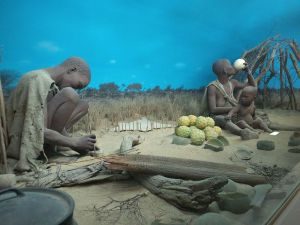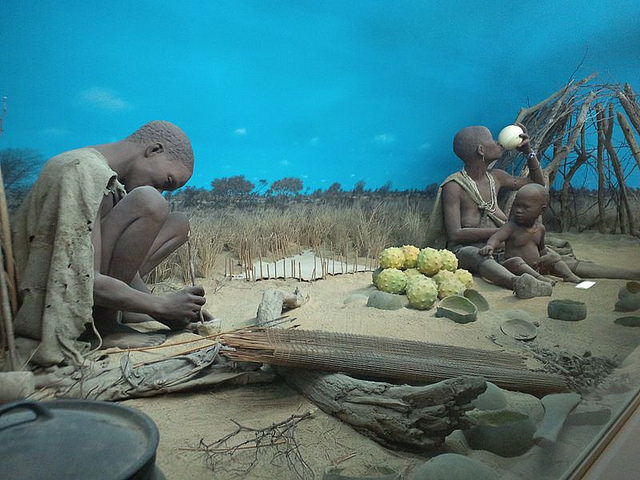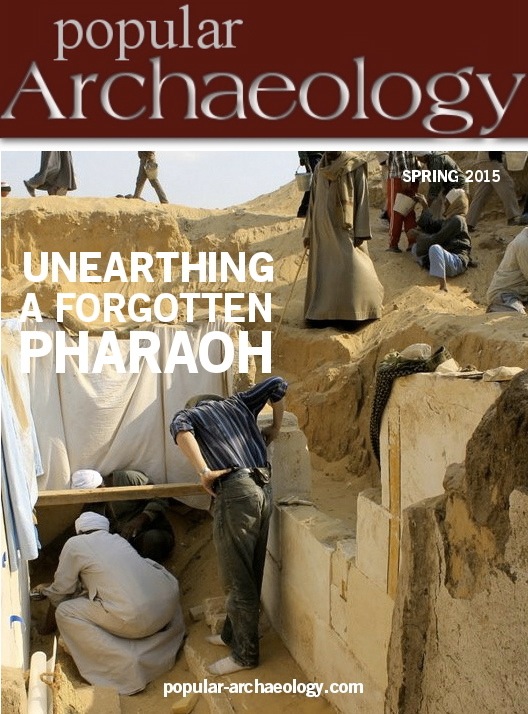
University College London—Sex equality in residential decision-making explains the unique social structure of hunter-gatherers, a new UCL study reveals.
Previous research has noted the low level of relatedness in hunter-gatherer bands. This is surprising because humans depend on close kin to raise offspring, so generally exhibit a strong preference for living close to parents, siblings and grandparents.
The new study, published today in Science and funded by the Leverhulme Trust, is the first to demonstrate the relationship between sex equality in residential decision-making and group composition.
In work conducted over two years, researchers from the Hunter-Gatherer Resilience Project in UCL Anthropology lived among populations of hunter-gatherers in Congo and the Philippines. They collected genealogical data on kinship relations, between-camp mobility and residence patterns by interviewing hundreds of people.
This information allowed the researchers to understand how individuals in each community they visited were related to each other. Despite living in small communities, these hunter-gatherers were found to be living with a large number of individuals with whom they had no kinship ties.
The authors constructed a computer model to simulate the process of camp assortment. In the model, individuals populated an empty camp with their close kin – siblings, parents and children.
When only one sex had influence over this process, as is typically the case in male-dominated pastoral or horticultural societies, camp relatedness was high. However, group relatedness is much lower when both men and women have influence—as is the case among many hunter-gatherer societies, where families tend to alternate between moving to camps where husbands have close kin and camps where wives have close kin.
______________________________________
 San bushmen family diorama. The San are thought to be a modern analog for prehistoric hunter-gatherers. Yanajin33, Wikimedia Commons
San bushmen family diorama. The San are thought to be a modern analog for prehistoric hunter-gatherers. Yanajin33, Wikimedia Commons
_____________________________________
First author of the study, Mark Dyble (UCL Anthropology), said: “While previous researchers have noted the low relatedness of hunter-gatherer bands, our work offers an explanation as to why this pattern emerges. It is not that individuals are not interested in living with kin. Rather, if all individuals seek to live with as many kin as possible, no-one ends up living with many kin at all.”
Many unique human traits such as high cognition, cumulative culture and hyper-cooperation have evolved due to the social organisation patterns unique to humans.
Although hunter-gatherer societies are increasingly under pressure from external forces, they offer the closest extant examples of human lifestyles and social organisation in the past, offering important insights into human evolutionary history.
Senior author, Dr Andrea Migliano (UCL Anthropology), said: “Sex equality suggests a scenario where unique human traits such as cooperation with unrelated individuals could have emerged in our evolutionary past”.
______________________________________
A University College London press release.
About UCL (University College London)
UCL was founded in 1826. We were the first English university established after Oxford and Cambridge, the first to open up university education to those previously excluded from it, and the first to provide systematic teaching of law, architecture and medicine. We are among the world’s top universities, as reflected by performance in a range of international rankings and tables. UCL currently has over 35,000 students from 150 countries and over 11,000 staff. Our annual income is more than £1 billion.
___________________________________________________
 Did you like this? Read more articles like this with a premium subscription to Popular Archaeology Magazine.
Did you like this? Read more articles like this with a premium subscription to Popular Archaeology Magazine.
In addition, the latest Popular Archaeology ebook is now available.
______________________________________________
Travel and learn with Far Horizons.
____________________________________________
 Popular Archaeology’s annual Discovery Edition eBook is a selection of the best stories published in Popular Archaeology Magazine in past issues, with an emphasis on some of the most significant, groundbreaking, or fascinating discoveries in the fields of archaeology and paleoanthropology and related fields. At least some of the articles have been updated or revised specifically for the Discovery edition. We can confidently say that there is no other single issue of an archaeology-related magazine, paper print or online, that contains as much major feature article content as this one. The latest issue, volume 2, has just been released. Go to the Discovery edition page for more information.
Popular Archaeology’s annual Discovery Edition eBook is a selection of the best stories published in Popular Archaeology Magazine in past issues, with an emphasis on some of the most significant, groundbreaking, or fascinating discoveries in the fields of archaeology and paleoanthropology and related fields. At least some of the articles have been updated or revised specifically for the Discovery edition. We can confidently say that there is no other single issue of an archaeology-related magazine, paper print or online, that contains as much major feature article content as this one. The latest issue, volume 2, has just been released. Go to the Discovery edition page for more information.
____________________________________________







